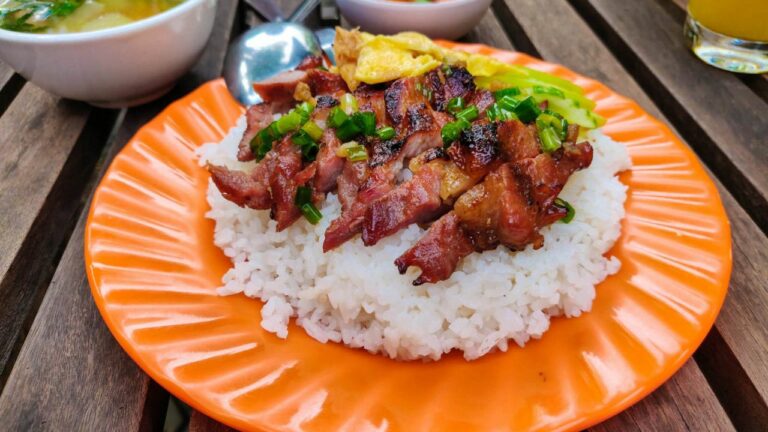Introduction: Cambodian Cuisine
Cambodian cuisine is a unique blend of flavors, spices, and textures that have developed over centuries of cultural, geographic, and historical influences. Known for its emphasis on rice, fish, and fresh herbs, Cambodian cuisine is marked by a delicate balance of sweet, sour, salty, and bitter flavors that come together to create a distinct and delicious taste. In this article, we will explore the influences, staple ingredients, signature dishes, street food culture, desserts, and beverages that make Cambodian cuisine one of the most fascinating and flavorful in Southeast Asia.
Influences: Southeast Asia & French
Cambodian cuisine has been shaped by a range of cultural and historical influences, the most significant of which are Southeast Asian and French. The Southeast Asian influence is evident in the use of fresh herbs and spices, such as lemongrass, ginger, and galangal, as well as the emphasis on rice and fish. The French colonial influence can be seen in the use of butter and cream in some dishes, as well as the influence on pastry and baking. The combination of these influences has created a unique and complex cuisine that is both delicious and diverse.
Staple Ingredients: Rice, Fish & Spices
Rice is the staple ingredient in Cambodian cuisine and is often used in place of bread or noodles. Cambodian cuisine also features a variety of fish dishes, with freshwater fish being the most commonly used. Vegetables are typically used as a garnish or side dish, but are also used in soups and stews. Spices and herbs, such as lemongrass, kaffir lime leaves, and garlic, are used to add flavor and complexity to dishes.
Signature Dishes: Fish Amok & Kuy Teav
Two of the most popular Cambodian dishes are fish amok and kuy teav. Fish amok is a steamed fish curry that is typically made with coconut milk, lemongrass, and kaffir lime leaves, and is served in a banana leaf. Kuy teav is a noodle soup that is commonly eaten for breakfast and can be made with a variety of meats or seafood.
Street Food Culture: Nom Banh Chok & Bok Lahong
Cambodian street food is abundant and diverse, with many vendors selling delicious and affordable snacks and meals. Nom banh chok is a dish made with rice noodles, fish curry, and fresh herbs, while bok lahong is a salad made with green papaya, tomatoes, and peanuts. These dishes are popular among locals and tourists alike.
Desserts: Sticky Rice & Tropical Fruits
Cambodian desserts are often made with sticky rice and tropical fruits, such as mango, coconut, and durian. Sticky rice is typically cooked with coconut milk and sugar, and can be served as a sweet or savory dish. Fruit is often used as a garnish or main ingredient in desserts, and is enjoyed for its natural sweetness and refreshing taste.
Beverages: Coffee, Tea & Sugar Palm Juice
Cambodian beverages include coffee, tea, and sugar palm juice. Coffee is typically brewed strong and sweet, while tea is served hot or iced and can be flavored with herbs or fruit. Sugar palm juice is a refreshing and sweet drink made from the sap of the sugar palm tree.
Conclusion: Cambodian Cuisine’s Unique Flavor
Cambodian cuisine is a fascinating and flavorful blend of culture, history, and geography. With its emphasis on rice, fish, and fresh herbs, Cambodian cuisine is marked by a delicate balance of sweet, sour, salty, and bitter flavors that come together to create a distinct and delicious taste. From signature dishes like fish amok and kuy teav, to street food favorites like nom banh chok and bok lahong, to desserts made with sticky rice and tropical fruits, Cambodian cuisine offers something for everyone to enjoy.

